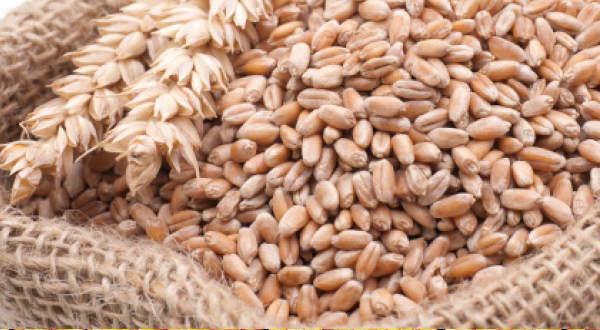Procurement of wheat by the government agencies surpassed last year’s figures of 341.31Lakh Metric Tonnes (LMT) to touch 341.56LMT on 24.05.2020, surmounting all impediments created due to the spread of COVID-19 virus and the country wide lockdown. Wheat harvesting generally starts towards end of March and procurement commences in the first week of April every year. However, with the imposition of national lockdown with effect from midnight of 24&25.03.2020, all operations came to a standstill. The crop had ripened by then and was ready for harvesting. Considering this, Government of India gave relaxation to start agricultural and related activities during the lockdown period,and the procurement could start from 15.04.2020 in most of the procuring states. Haryana started little late on 20.04.2020.
The biggest challenge was to ensure that procurement is done in a safe manner during the pandemic. This was achieved through a multi-pronged strategy of awareness creation, social distancing and deployment of technology. The number of purchase centers was increased substantially reducing the farmer footfalls in individual purchase centers. New centers were set up using every facility available at gram panchayat level and the numbers were increased sharply in the major procuring states like Punjab where it went up from 1836 to 3681, 599 to 1800 in Haryana and from 3545 to 4494 in Madhya Pradesh. Using technology, farmers were provided specific dates and slots to bring their produce which helped in avoiding overcrowding. Strict social distancing norms were followed and sanitization activities were undertaken regularly. In Punjab, every farmer was allotted specific spaces earmarked for dumping of stocks and no one else was allowed to enter those areas. Only people who were directly associated were allowed to be present during daily auctions.
In addition to the threat of spread of virus, there were 3 major challenges faced by the procuring agencies in wheat procurement. As all the Jute mills were closed, production of Jute bags used for filling of procured wheat stopped, creating a major crisis. This was tackled by using more plastic bags, supplemented by used bags with very strict quality conditions. Through continuous monitoring and timely actions, it could be ensured that the procurement was not stopped due to lack of packaging materials anywhere in the country.
There were unseasonal rains in all the major producing states leading to wheat getting exposed to water. This posed a major threat to the farmers as such stocks could not be procured under normal specifications. Government of India and Food Corporation of India (FCI) intervened immediately and after conducting detailed scientific analysis, specifications were re-fixed to ensure that no farmer is put to distress while making sure that the produce so procured meets the minimum quality requirements of the consumers.
Third challenge was the tight labour supply position as well as the general fear created among the masses about the virus. This was addressed by taking a series of confidencebuilding measures at the local level by the state administration. Labourwasprovided with adequate protection safety gears like masks, sanitizers etc. and other precautionary measures were also taken to ensure their safety.
With the concerted and well-coordinated efforts by Government of India, FCI, State Governments and their agencies, procurement of wheat could be undertaken very smoothly in all surplus states, helping farmers and replenishing stocks in the central pool. The state wise procurement data forwheat procuring states is as below:
Source: PIB
Image Courtesy: Miller Magazine
You may also like
-
Trade Connect E-platform For Exports Is Single Window, Fast, Accessible And Transformational: Shri Piyush Goyal
-
Dot Simplifies Approval Processes For Telecom Licenses And Wireless Equipment
-
Coal Production and Supply Trends on Positive Trajectory
-
Union Minister To Release Booklets On Promotion Of Indigenous Species & Conservation Of States Fishes
-
2nd India-Japan Finance Dialogue held in Tokyo on 6th September, 2024
